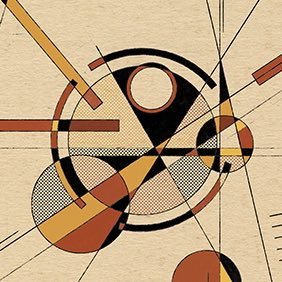About A_Mashiro

A-Mashiro is a Japanese artist based in Tokyo, active in the field of digital art since 2021. With a creative career spanning over two decades, his practice encompasses oil painting, acrylics, photography, woodworking, and various other media. He has exhibited his work in both Tokyo and Kyoto, gradually building a visual language rooted in precision, structure, and cultural introspection.
After discovering NFTs, A-Mashiro fully embraced digital art, presenting his works in exhibitions across the United States and Europe. In 2024, he held a solo show at Neort in Tokyo that seamlessly integrated physical and digital expressions, receiving critical acclaim. He is also an official artist for Bright Moments Tokyo.
Beyond his own artistic production, A-Mashiro is deeply engaged in fostering dialogue within the art community, actively supporting and introducing the work of fellow artists to audiences in Japan.
An interview with A_Mashiro led by Carlo Borloni


In this project, you revisit a millennium of Japanese painting through the lens of AI and your own hand. Do you see this act as a preservation, a rebellion, or a mourning of something that is fading?
Even if I hadn't worked on this piece, the Tale of Genji, which I chose as the core of this work, would probably never disappear from history. I don't know for sure now, but as things stand, I think it will be passed down for longer than my work. So, what I'm doing is simply offering a perspective from a single point in time, reflecting on history through my own personal sensibilities. That might be very arrogant.All of my works are like this; they all ultimately return to me. However, I live in the present and in Japan. I believe that this naturally reflects the era in which I live. I look back on history from my own perspective and express the value of my existence here through my works. I do not feel any additional emotions beyond that. However, in the act of creation, I do feel a sense of nostalgia.


Japanese aesthetics often center on absence, silence, and impermanence, concepts like ma and wabi-sabi. How do these ideas resonate in your process of creating with a machine trained to produce infinite versions?
In my opinion, machines, especially AI, are like empty boxes at first. They can become anything. Therefore, I believe that if we teach them about Japanese culture, they can reproduce certain aspects of it, and I think the same applies to other cultures. However, at this point, I think it is more about generating “something that resembles” from many patterns rather than learning sensory perceptions. That said, I believe that within a few years (or perhaps it already exists and I am unaware of it), AI capable of sensory perception will emerge.This time, I fed a large number of traditional Japanese paintings, both famous and unknown, into the AI for learning. While it's not perfect, I think we were able to achieve good results. Personally, I prefer imperfect outputs over perfect ones, as they allow for more enjoyment during the final hand-drawn process. While I currently prefer the current output, I anticipate that this will eventually become obsolete. However, I believe that the current output holds value as a creation of this era.


Your forms, circles, lines, modular patterns, suggest order, yet your compositions hold a quiet emotional charge. Where does emotion enter your geometry? Is there grief in symmetry?
I am answering your question while feeling a little unsure whether I have translated it correctly. As you say, my work is primarily an expression of my inner stability. I believe that this stability also spreads to the viewer. When I create, I don't feel much emotion. There is not much sadness or joy; I just paint. I am in a state of intense concentration. However, there are times when I do experience emotional waves.As you know, life is not always smooth. Therefore, emotions from those moments may occasionally find their way into my work. However, I strive to create my work in a state where such emotions are as excluded as possible. This may seem like a meaningless act at first glance. But in an era where information is overwhelming and many people seek silence, my creative process is akin to meditation for me. I hope that only peaceful moments flow through it every day.


You grew up surrounded by traditional craft, such as Kumiko-Zaiku. What does it mean to you to retranslate these tactile, handmade memories through an intangible digital medium?
I was certainly raised surrounded by traditional Japanese culture. However, that does not mean that I truly understand it; I simply grasped it visually. Nevertheless, it remains firmly in my memory. The scenery of my childhood home, where I spent so much time reflecting on my life, is something I cannot erase. I think many people can relate to this: there are things that remain in our visual memory even though we know nothing about their essence. The Japanese culture I incorporate into my work is similar to that.I am not a historian, so I have little to say about these things. However, the fact that they were part of my life is more important to me. I feel no barriers to expressing them, whether physically or digitally. I believe that through my drawings, meaning is born in any medium.


AI brings with it the illusion of precision and control, yet often leads to unpredictability. How do you navigate the space between what you intend and what the machine reveals to you?
I enjoy that gap. As I mentioned in my previous answer, I find it more enjoyable when unintended results are produced. Of course, I do set certain limits, and I exclude outputs that deviate too much from the intended results.In this work, the AI output is merely one component of the material, and the focus is on how to create something from that. I won’t go into specifics, but this time I fed the AI a significant amount of reference material and prompts. It’s not about quantity, but I believe it was worth the effort. Additionally, I believe it’s important that the AI output is not the final work.


You once worked with oil, acrylic, and wood. Now, with AI and NFTs, your work lives on-chain, immaterial and immutable. How do you reconcile the ephemerality of traditional Japanese thought with the supposed permanence of the blockchain?
I don’t think it’s necessary to place the value of permanent preservation of traditional art and NFTs on the same level, or even compare them. To be precise, NFTs are not permanent either, as they exist on servers. However, in terms of not deteriorating, they are completely different from traditional art. Nevertheless, I think we might feel a sense of nostalgia when we look at NFT art from two or three years ago.I believe that the ephemeral quality of a work lies not in its form but in the memories rooted in it. Therefore, whether it is traditional art or an NFT, it does not matter. I think that when the people who possess this work look back on the past, there will come a time when my work too will carry that ephemeral quality.


When you collaborate with AI, who are you listening to more: your own instinct or the machine’s suggestion? Can silence still exist when something is always generating?
I listen to my intuition. But where does intuition come from? “It just feels right” or “It just feels wrong”, that is intuition.In the constant flow of information we encounter daily, we are constantly forced to make choices. If we were to reject that, we would have to return to a time before the internet. We are creatures that constantly move forward. However, we can choose how to live. I believe it is possible to choose silence, but that would be a difficult journey. Though there may come a time when I must make such a choice, I intend to trust the knowledge I have gained so far and follow my intuition to incorporate AI as part of my creative process.


Your work is deeply rooted in Japanese culture, yet shown globally through digital channels. Do you ever fear the nuances of that heritage might be flattened or misunderstood? Or is translation itself part of the artwork?
I think this applies to any culture, but fortunately or unfortunately, Japanese culture tends to be highly respected in the digital world (e.g., Akira, Ghost in the Shell, Studio Ghibli, etc.). Initially, I had negative opinions about works similar to these. However, I now view them in a completely different light.The Japanese culture created by Japanese people and the Japanese culture created by people from other countries are completely different things. For example, if a Japanese person were inspired by Italian paintings and created a work, would that be Italian painting? No, it would be a Japanese-style painting of Italy. In the same way, many works inspired by Japanese culture can be viewed similarly. And it's not a matter of which is better; each exists on its own terms.I cannot depict Japan from an overseas perspective. Similarly, those from overseas cannot depict the Japan that Japanese people who grew up in Japan feel. I believe expression is free. It is regrettable that some people may misunderstand Japanese culture, but I believe that is part of the times. I hope that my thoughts will reach those who can discern the essence.


In what way has engaging with AI changed your identity as an artist, not just your technique, but your sense of authorship, intuition, or even solitude in the creative act?
Even before I started using AI for creative work, I believed that AI was just a tool, and I still hold that belief today. Therefore, I used AI in the same way I would use a pencil or paint. What I consider most important when using AI is necessity. Why use AI? If you don’t clarify that from the start, you risk becoming a slave to the AI.As time has progressed, humanity has experienced many changes. I believe AI is one of them. This time, I did not use the AI’s output as the final work.This might be seen as an escape. However, I did not have the confidence that AI could capture the unique characteristics of my work or perfect the paintings I had created. And, ultimately, I love drawing. Even if I gave AI instructions and it produced a wonderful painting, I wouldn’t be satisfied with it. This might be an old-fashioned way of thinking. But as long as I am who I am, I feel I cannot entrust everything to AI. This is one of the outcomes of this creative process.


This series could be read as a meditation on time, past forms reimagined through present tools, released into a future-facing space like the NFT ecosystem. What kind of future are you trying to leave a mark on?
I am not particularly interested in the future. Perhaps this is because I lack the ability to imagine what the future will be like. As a child, I used to dream about the future, but now I no longer do so. However, this does not mean that I have lost hope. It is simply that the pace of change has become so rapid that it has become difficult to imagine the future. That said, and perhaps paradoxically, I hope that my work will have some kind of influence on future artists.I have been creating based on my beliefs. It is difficult to articulate this concretely, and I don't think it's necessary. Because the works exist. If artists from a time after I'm gone see them and feel inspired to pour more passion into their own creations, I would be very happy. However, I do hope to influence many artists while I'm still alive. After all, I can't high-five someone from under the ground. lol

Sign up for our newsletter to keep up with the latest news from NINFA
Sign up for our newsletter to keep up with the latest news from NINFA
Write us at: info@ninfa.io, or click here if you need support
Copyright © 2026 Ninfa Labs - 12094240962 - All rights reserved

